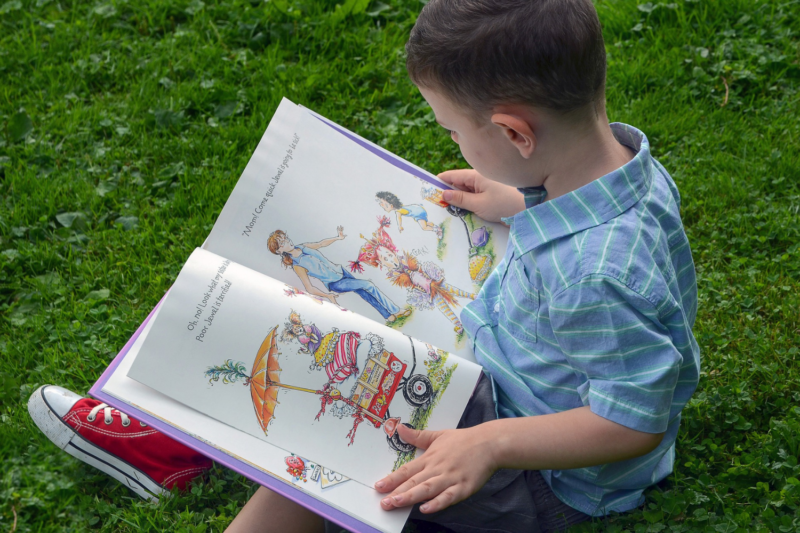Study finds boys’ dislike for reading fiction is actually fiction!
This additional information is included as part of a press release labeling system introduced by the Academy of Medical Sciences and Science Media Centre. For more details click here.

Photo by FrancineS0321
Gender stereotypes around reading may be holding boys back in the classroom, according to a new study published in the peer-reviewed International Journal of Inclusive Education.
In what is described as an ‘unexpected’ and ‘significant’ finding, fiction is the most favoured reading genre for schoolboys compared with non-fiction, comics and magazines.
Well over half (57%) of the boys said they liked fiction or story books ‘a lot’ according to research based on more than 300 pupils aged from seven to eight in Australia.
Girls were more likely to rate enjoyment of reading non-fiction more highly than boys (55% vs 51%).
The results have important implications for parents, teachers and policy-makers. They suggest that the range of boys’ reading preferences may have been underestimated.
Now, lead study author Laura Scholes, an expert in educational semiotics from the Institute of Learning Sciences and Teacher Education, Australian Catholic University in Brisbane, Australia, who led the study is calling for reform of literacy agendas, so lessons do not just focus on developing reading skills. Teachers should also promote the will to read and the enjoyment gained from literature.
Associate Professor Scholes wants teachers to also communicate with parents on a regular basis about strategies that encourage children to read, including fiction.
“These findings challenge the long-standing myth that boys prefer non-fiction.
“The study demonstrates the importance of promoting reading enjoyment – particularly fiction – early on in schooling.
“This includes special consideration for boys and students from economically marginalized communities.
“Fiction plays a key role in reading development. So, facilitating opportunities to develop sustained enjoyment of reading of this text type in the classroom is one way to expand boys’ repertoire of experience. It also supports students with more limited access to quality reading resources.”
Evidence from international studies shows that reading for pleasure is linked to higher reading outcomes. However, this varies according to a child’s gender, location and socio-economic status.
Some teachers may believe pupils from low-income homes have less desire to read a range of texts. Others are influenced by stereotypes and assume boys prefer non-fiction, so they give them more of what they believe they like. This is despite fiction being more closely aligned with more advanced reading ability.
The aim of this study was to investigate self-reported reading enjoyment, frequency, and achievement on national reading tests for 318 Year 3 pupils in Australia.
The researchers used data on 152 boys and 166 girls attending 14 schools across South East Queensland in a range of socioeconomic communities, with the majority of students being in state schools.
All children were asked to rate their level of enjoyment for reading fiction, non-fiction, and comics and magazines from ‘like a lot’ to ‘like a little’ or ‘don’t like’. They also had to indicate how frequently they read, ranging from ‘daily’ to ‘hardly ever’.
Overall, the proportion of girls and boys who liked fiction ‘a lot’ was 63%, just over half (53%) said the same for non-fiction, and 37% for comics and magazines.
The findings showed that students who had higher levels of enjoyment for fiction and non-fiction, and who read more frequently were more likely to have better reading skills.
The results also confirm that students from schools in poorer areas tend to struggle to achieve the same reading scores as more affluent children.
Library visits are ‘particularly important for emerging readers’ according to Scholes who says these may especially broaden the experience of boys and students from under-resourced homes.